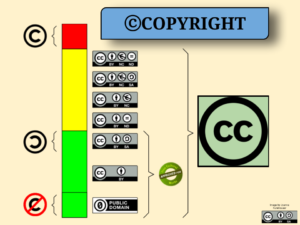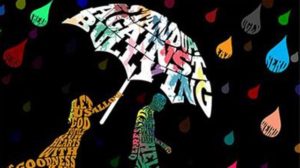In the last ten years, technology has experienced a massive increase in use in schools, and with this, a rise in concern about the proper use of technology at all levels. As information of all kinds, not just educational, is at the reach of students’ hands, the risk of using technology for inappropriate purposes or accessing age-inappropriate resources is overwhelming. Digital citizenship has been a frequent topic of discussion in schools. Moreover, educators are hard working to incorporate digital citizenship in their courses and with that counteract as much as possible the known and unknown effects of an exponentially growing digital world.
For the past five weeks, I have participated in the Digital Citizenship class at Lamar University in my quest to finish a Masters in Educational Technology. One of the most significant reasons for me to start this journey was my interest to help students and teachers to use technology in acceptable, safe and respectful ways. During this course, I increased my knowledge of the nine elements of digital citizenship, copyright, and fair use, bullying and strategies to fight it. I analyzed my digital footprint and was surprised to learn the information about me that is available to the public. Most importantly, I reflected on what I need to do to keep building a positive digital footprint, for example, continue to collaborate with other educators on social platforms or publishing articles in online journals. The knowledge of all those elements allow me to work towards my goal.
My greatest challenge during this class has been to manage time and balance my responsibilities as a graduate student, as a teacher, and with my family, but I am proud to have been able to apply my knowledge in different areas of my day to day life. As an educator, I have actively looked for opportunities to establish conversations with my students about proper technology etiquette in all settings, promoted kindness in all interactions as well as make them aware of the possible future consequences of sharing tasteless information and oversharing in social media. I have paid more attention to the use of copyrighted images and materials by my students and me and the extent of our fair use. Even at home with my third-grade son, I have worked to teach him the basic way to cite his research sources to respect others’ intellectual work.
What I enjoyed the most was reading the class articles, they open up my eyes to our contemporary reality, making me more aware of the current issues. For example, I was unaware of the “Net Neutrality” concept, or the problem with filter bubbles and how the last one can isolate us from interacting with other perspectives and ideas. It was fascinating and scary at the same time to learn about how they have been evolving and their implications in our lives.
On week 2, we discussed the impact of the use of technology. I created a video explaining how smartphones have evolved and how they affect teenagers in school. The video concisely explains everyday issues related to smartphone use in school, provides research-based statistical information and proposes an educational approach to dealing with the problem.
Digital citizenship is not a job of one day, educators, administrators, parent and the entire community need to come together to protect youth and help them build a safe world, where they are aware of their digital tattoo and with the best possible opportunities for the future.
If you have the opportunity to dive into digital citizenship through a class, or on your own, make sure to aim to the big ideas listed below. Check the resources in each section and other blog posts that I have done on the topic.
The significance of digital citizenship and its issues.
-Common sense education on digital citizenship. Everything educators need to empower the next generation of digital citizens.
-Digizen website. Provides information for educators, parents, caregivers, and young people. It is used to strengthen their awareness and understanding of what digital citizenship is, encouraging users to become responsible DIGItal citiZENS.
–Google’s Be Internet Awesome website. Includes resources to help kids be safe, confident explorers of the online world.
–Edutopia’s “Digital Citizenship: Resource Roundup.” A collection of articles, videos, and other resources on internet safety, cyberbullying, digital responsibility, and media and digital literacy.
The nine elements of digital citizenship
-Mike Ribble’s Digital Citizenship website. Provides resources to use technology appropriately.
-Blog post: If you think you know about digital citizenship think twice. Funkhouser (2019).
Digital footprint – understanding the impact of the use of technology in our lives.
-Blog post: Life after the internet. Funkhouser (2015).
-An introduction to net neutrality. Marshal Data.
-Beware online “filter bubbles.” TED2011. Pariser, E. –Did Facebook’s big new study kill my filter bubble thesis? Pariser, E. (2015).
-Federal Communications Commission (2015). Open internet.
-What net neutrality means for students and Educators. Long, C. (2015).
-13 Things you need to know about the FCC’s net neutrality regulation. Reardon, M. (2015).
Copyright and the legal implications
-Blog post: Copyright, fair use and creative commons: what you need to know. Funkhouser (2019).
-Blog post: How the use of copyrighted materials affects the teaching and learning-process. Funkhouser (2019).
-Creative Commons. About the licenses web page.
Fair use: The secrets no one tells you. Mccord, G. (2014).
-A 21st century copyright office: The conservative case for reform (white paper). Tepp, S. & Oman, R. (2015).
-United States Copyright Office (2012). Copyright basics (circular 1).
Cyberbullying
-Blog post: Cyberbullying: A problem of our time.
A Majority of Teens Have Experienced Some Form of Cyberbullying. Pew Research Center. Anderson, M. (2018).
-Cyberbullying Research Center website. -Hinduja, S., & Patchin, J. W. (2015). Bullying beyond the Schoolyard: Preventing and responding to cyberbullying. (2nd ed.). Thousand Oaks, CA: Corwin.




